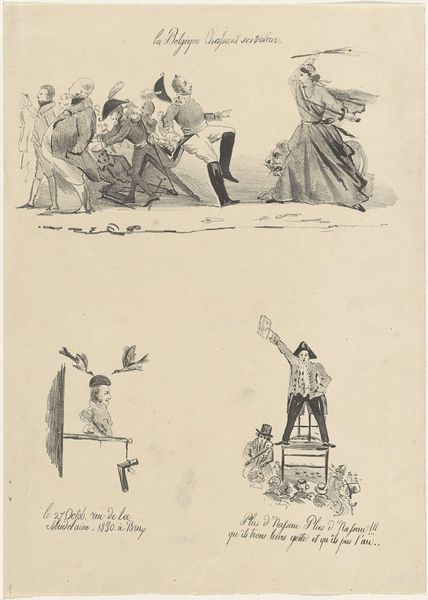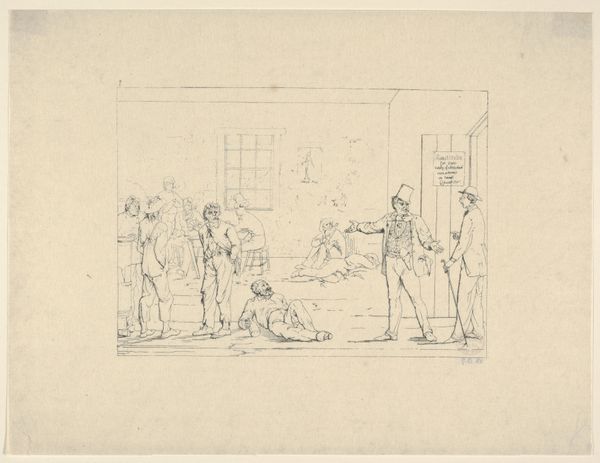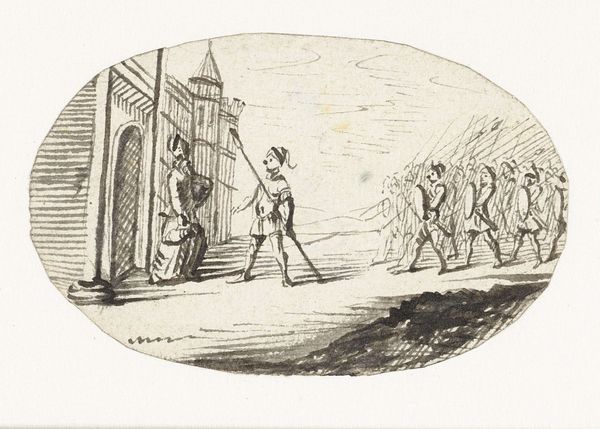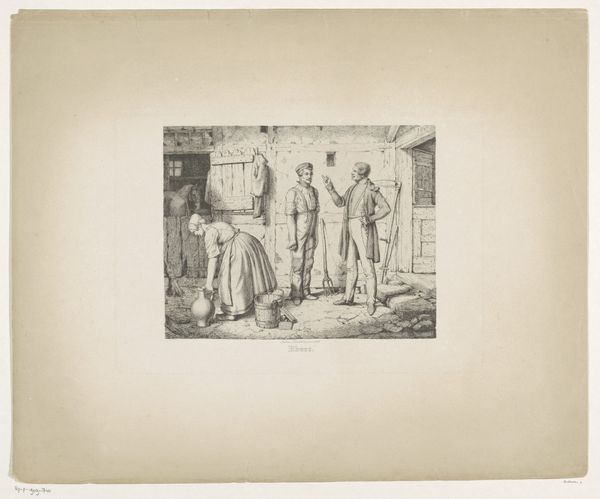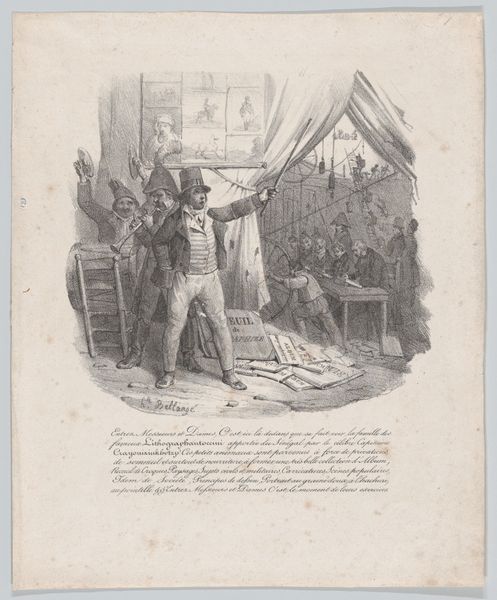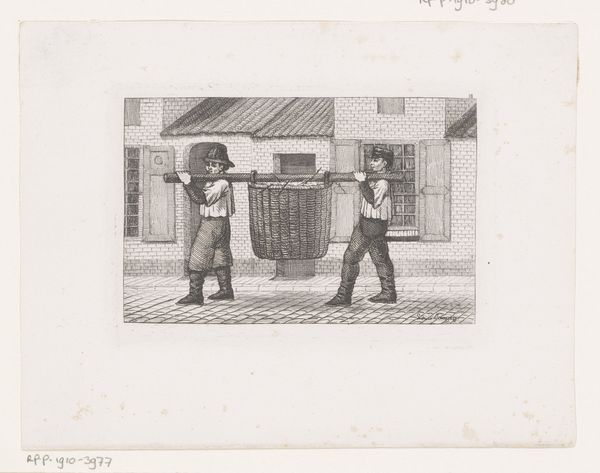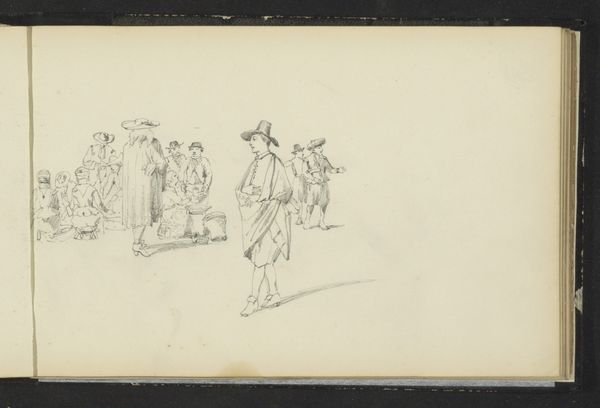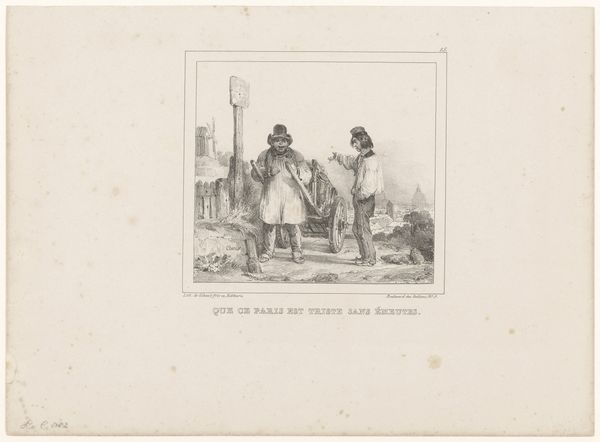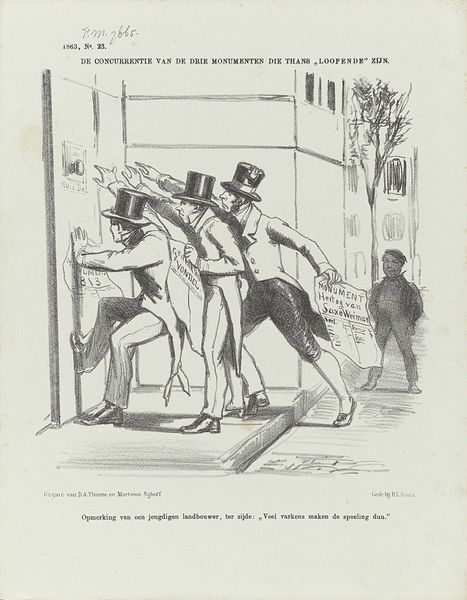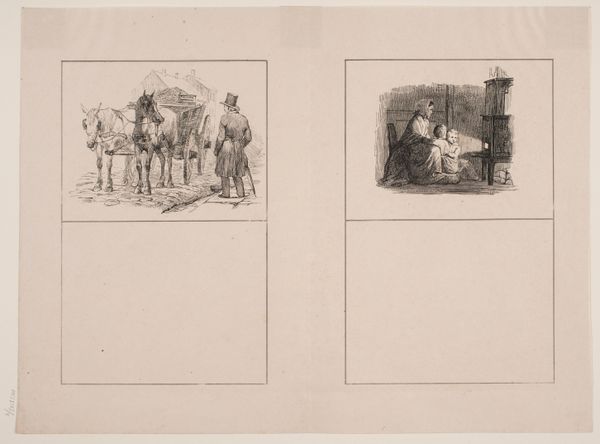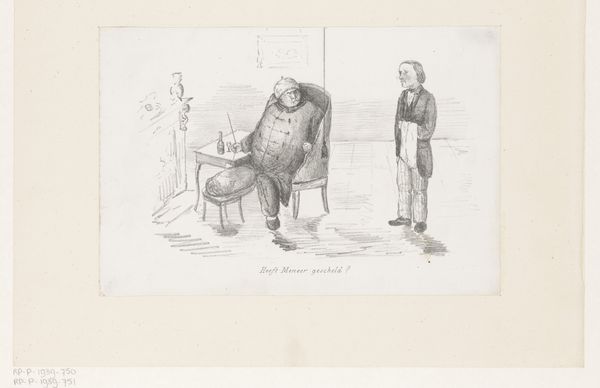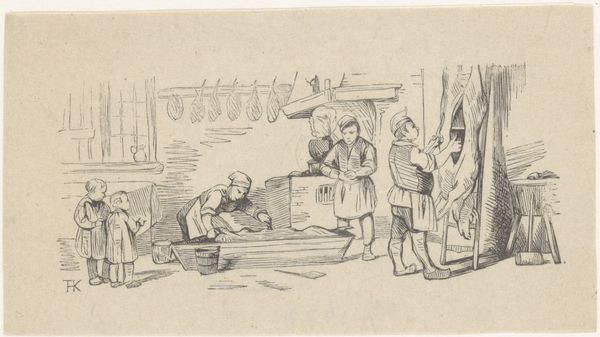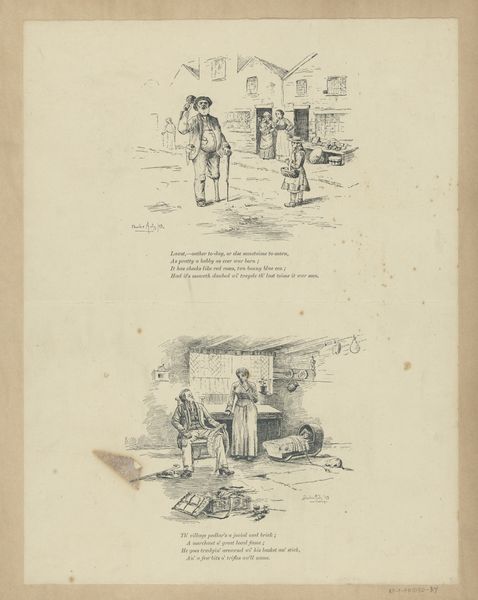
print, etching, engraving
#
light pencil work
#
narrative-art
# print
#
etching
#
pencil sketch
#
old engraving style
#
personal sketchbook
#
idea generation sketch
#
ink drawing experimentation
#
pen-ink sketch
#
sketchbook drawing
#
pencil work
#
genre-painting
#
history-painting
#
sketchbook art
#
engraving
Dimensions: height 108 mm, width 127 mm
Copyright: Rijks Museum: Open Domain
Curator: Welcome. Here we have Isaac Weissenbruch’s "Twist in een hoedenzaak," which translates to "Squabble in a Hat Shop," believed to have been created sometime between 1836 and 1912. Editor: Well, the title certainly fits! There’s so much aggressive energy packed into this small etching. My immediate impression is one of constricted drama—figures are crowded, almost bursting from the frame. The limited tonal range emphasizes this tension. Curator: Indeed. What speaks to me most powerfully is the historical symbolism. The hats, the attire—they're not just decorative. The hats signal status and profession and allow you a glimpse into the sociopolitical context of the narrative. I believe it hints at the tensions between classes during a certain period. Editor: I'm drawn to how the figures are rendered; the sharp, economical lines suggest a fast, efficient execution, probably to create and distribute printed illustrations and affordable artworks on paper to the population. One could almost envision this as part of a larger visual culture—perhaps from the industrial printing trades? What did a print like this communicate? Curator: Its power lies in portraying universal themes such as power, conflict, and, potentially, even injustice, with archetypal characters that might symbolize order, chaos, and struggle. Consider the theatrical drama—it is not subtle, the almost stereotypical gestures amplify the conflict. Editor: Right, it also begs the question—was Weissenbruch concerned with creating 'art' or with producing a compelling commodity? He probably intended the etching as a form of affordable and accessible image circulation in that era. The means of production are critical here. Curator: True, but look closer—every mark appears considered. Perhaps Weissenbruch aimed to elevate the genre by subtly injecting elements of timeless social and psychological significance? After all, an etching like this might carry a heavy, symbolic significance despite being made quickly with mundane materials and techniques of reproduction. Editor: Interesting…I still circle back to production and distribution of the visual—the number of impressions from this etched plate… the question of art for art's sake, versus images serving broader social and material needs. The artist may embed symbolic or psychological content, but their art will always exist with the materiality of its time. Curator: Perhaps art always fulfills multiple purposes then. The enduring fascination with "Twist in een hoedenzaak" proves it holds significance both as a material object and as a mirror reflecting enduring social complexities and human psychology across the centuries. Editor: I concur. Examining its form gives an appreciation of function beyond beauty, to open an expanded material space for dialogue with the past and present.
Comments
No comments
Be the first to comment and join the conversation on the ultimate creative platform.
